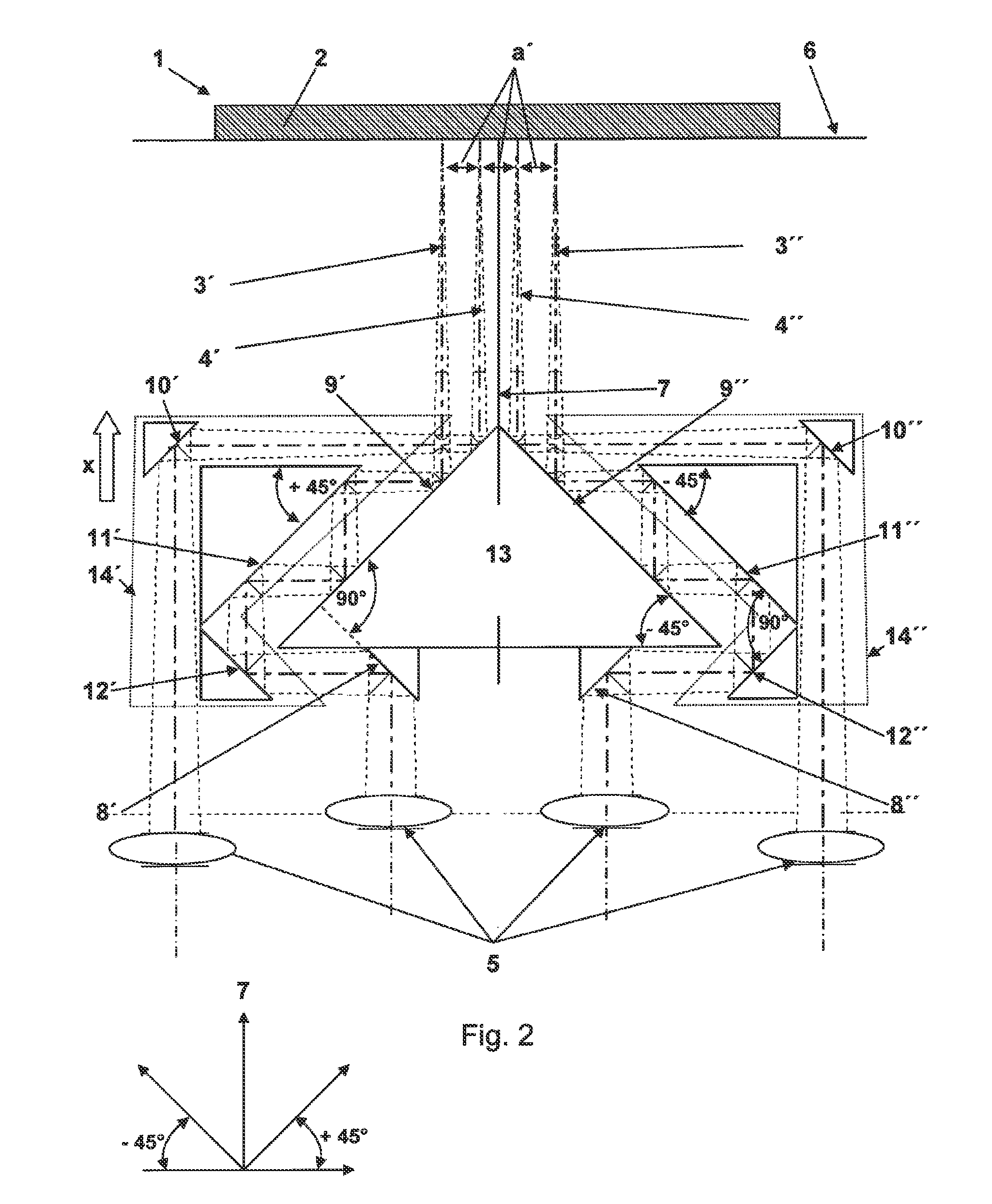Device for machining a workpiece by means of parallel laser beams
a technology of laser beams and workpieces, applied in laser beam welding apparatus, welding apparatus, metal-working apparatus, etc., can solve the problems of difficult adjustment of the spacing between laser beams, more particularly step-free, and desired results, and achieve the effect of reducing design complexity
- Summary
- Abstract
- Description
- Claims
- Application Information
AI Technical Summary
Benefits of technology
Problems solved by technology
Method used
Image
Examples
Embodiment Construction
[0024]FIGS. 1 and 2 are used to illustrate the device 1 according to the invention for processing a workpiece 2 in more detail in two functional positions, in which the parallel laser beams 3′, 3″, 4′, 4″ have firstly a large spacing a′, a″ (FIG. 1) and secondly a small spacing a′, a″ (FIG. 2) between one another. The device 1 has a plurality of focusing optical systems 5 assigned in each case to a laser beam 3′, 3″, 4′, 4″ for focusing each laser beam 3′, 3″, 4′, 4″ on a common focusing plane 6 on the workpiece 2. The laser beams 3′, 3″, 4′, 4″ form an outer first laser beam pair 3 and an inner second laser beam pair 4. The laser beams 3′, 3″, 4′, 4″ of each laser beam pair 3, 4 are equidistant from an axis of symmetry 7, independent of the spacing a′, a″ set in each case. Before the laser beams 3′, 3″, 4′, 4″ emanating from the respective focusing optical system 5 impinge on the workpiece 2, each laser beam 3′, 3″, 4′, 4″ is deflected on the reflection surfaces 8′, 8″, 9′, 9″, 10′...
PUM
| Property | Measurement | Unit |
|---|---|---|
| angle | aaaaa | aaaaa |
| angle | aaaaa | aaaaa |
| angle | aaaaa | aaaaa |
Abstract
Description
Claims
Application Information
 Login to View More
Login to View More - R&D
- Intellectual Property
- Life Sciences
- Materials
- Tech Scout
- Unparalleled Data Quality
- Higher Quality Content
- 60% Fewer Hallucinations
Browse by: Latest US Patents, China's latest patents, Technical Efficacy Thesaurus, Application Domain, Technology Topic, Popular Technical Reports.
© 2025 PatSnap. All rights reserved.Legal|Privacy policy|Modern Slavery Act Transparency Statement|Sitemap|About US| Contact US: help@patsnap.com



